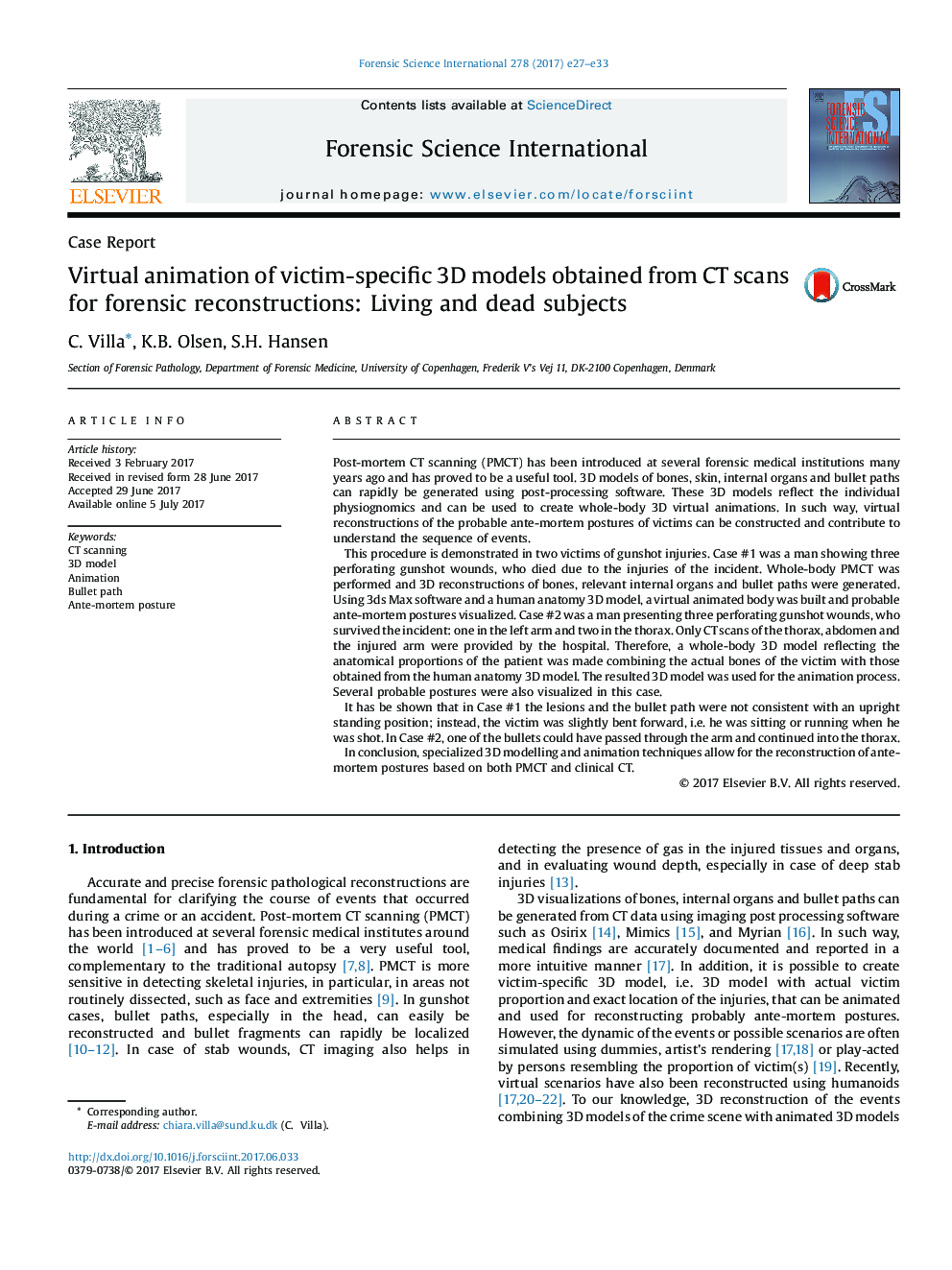| کد مقاله | کد نشریه | سال انتشار | مقاله انگلیسی | نسخه تمام متن |
|---|---|---|---|---|
| 6462305 | 1421972 | 2017 | 7 صفحه PDF | دانلود رایگان |

- Virtual animation of ante-mortem posture helps to understand dynamic of the crime.
- Animated victim-specific 3D models can be created both for dead and living victims.
- 3D visualizations are very important visual tools for presenting medical findings.
Post-mortem CT scanning (PMCT) has been introduced at several forensic medical institutions many years ago and has proved to be a useful tool. 3D models of bones, skin, internal organs and bullet paths can rapidly be generated using post-processing software. These 3D models reflect the individual physiognomics and can be used to create whole-body 3D virtual animations. In such way, virtual reconstructions of the probable ante-mortem postures of victims can be constructed and contribute to understand the sequence of events.This procedure is demonstrated in two victims of gunshot injuries. Case #1 was a man showing three perforating gunshot wounds, who died due to the injuries of the incident. Whole-body PMCT was performed and 3D reconstructions of bones, relevant internal organs and bullet paths were generated. Using 3ds Max software and a human anatomy 3D model, a virtual animated body was built and probable ante-mortem postures visualized. Case #2 was a man presenting three perforating gunshot wounds, who survived the incident: one in the left arm and two in the thorax. Only CT scans of the thorax, abdomen and the injured arm were provided by the hospital. Therefore, a whole-body 3D model reflecting the anatomical proportions of the patient was made combining the actual bones of the victim with those obtained from the human anatomy 3D model. The resulted 3D model was used for the animation process. Several probable postures were also visualized in this case.It has be shown that in Case #1 the lesions and the bullet path were not consistent with an upright standing position; instead, the victim was slightly bent forward, i.e. he was sitting or running when he was shot. In Case #2, one of the bullets could have passed through the arm and continued into the thorax.In conclusion, specialized 3D modelling and animation techniques allow for the reconstruction of ante-mortem postures based on both PMCT and clinical CT.
Journal: Forensic Science International - Volume 278, September 2017, Pages e27-e33